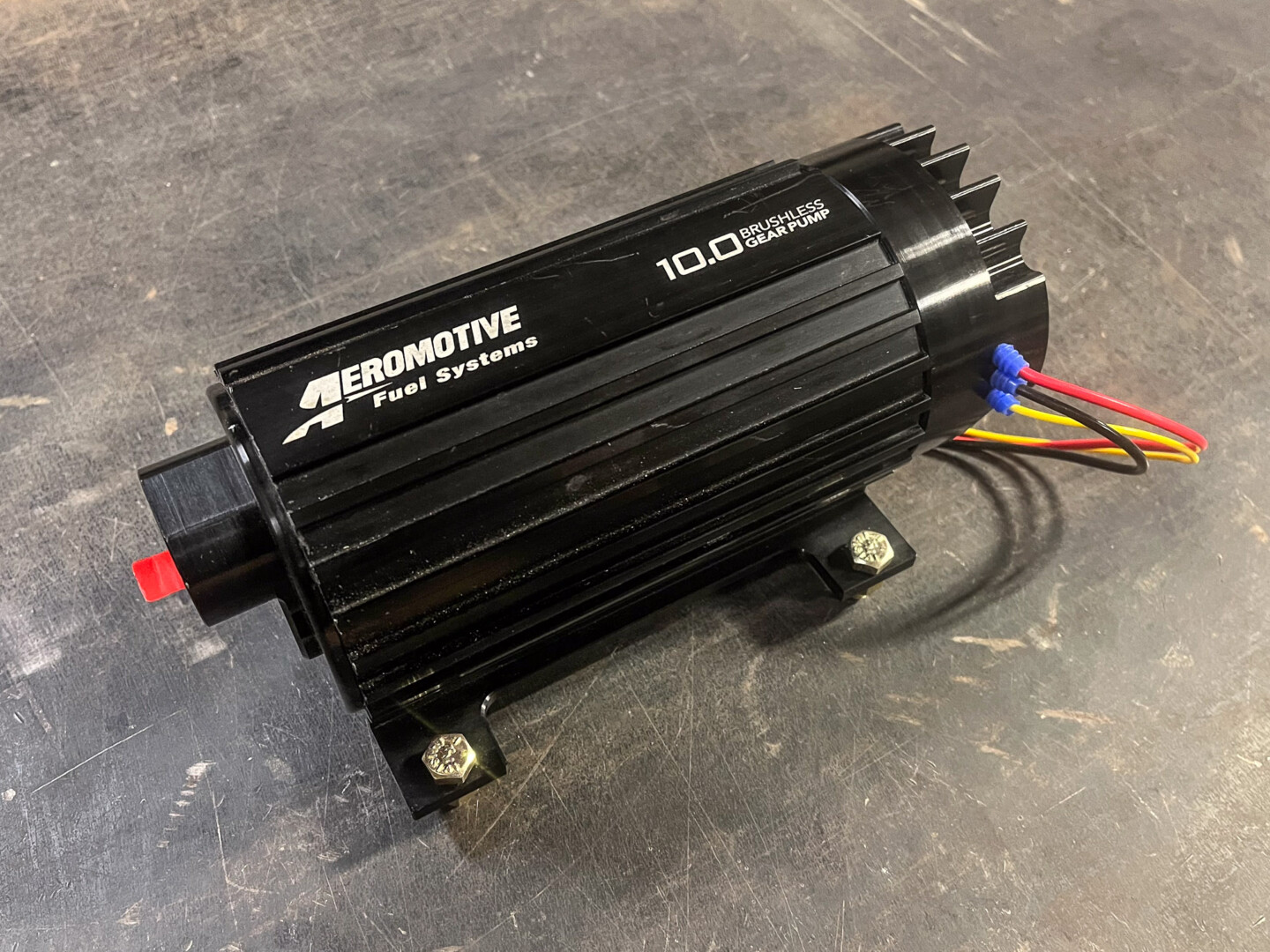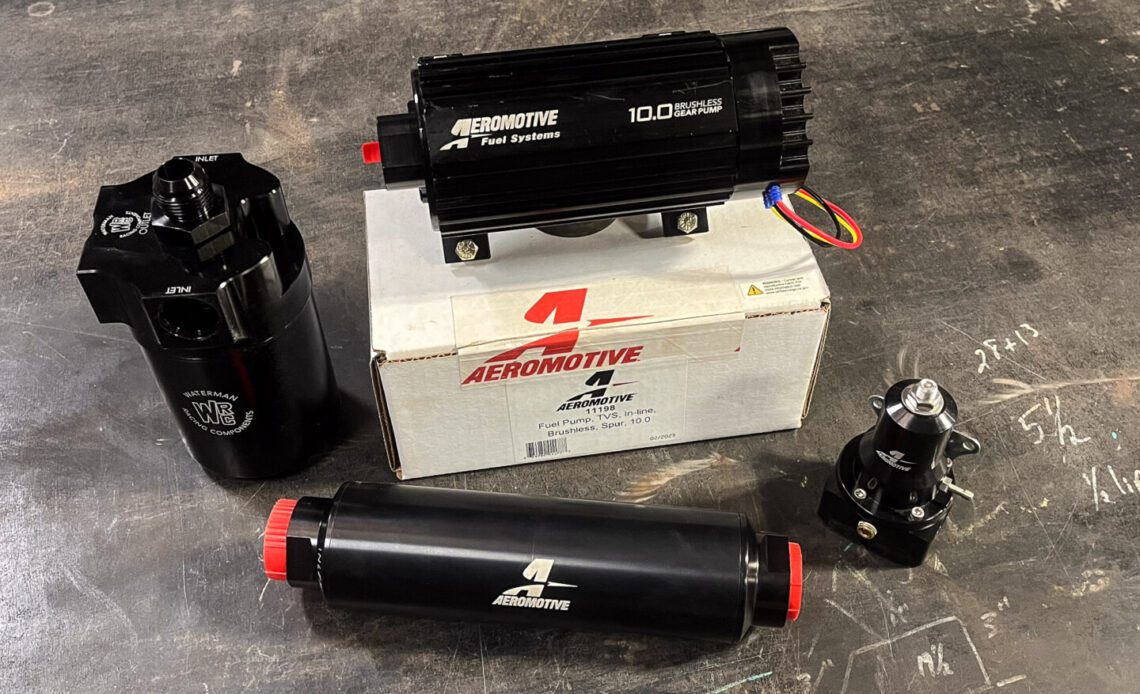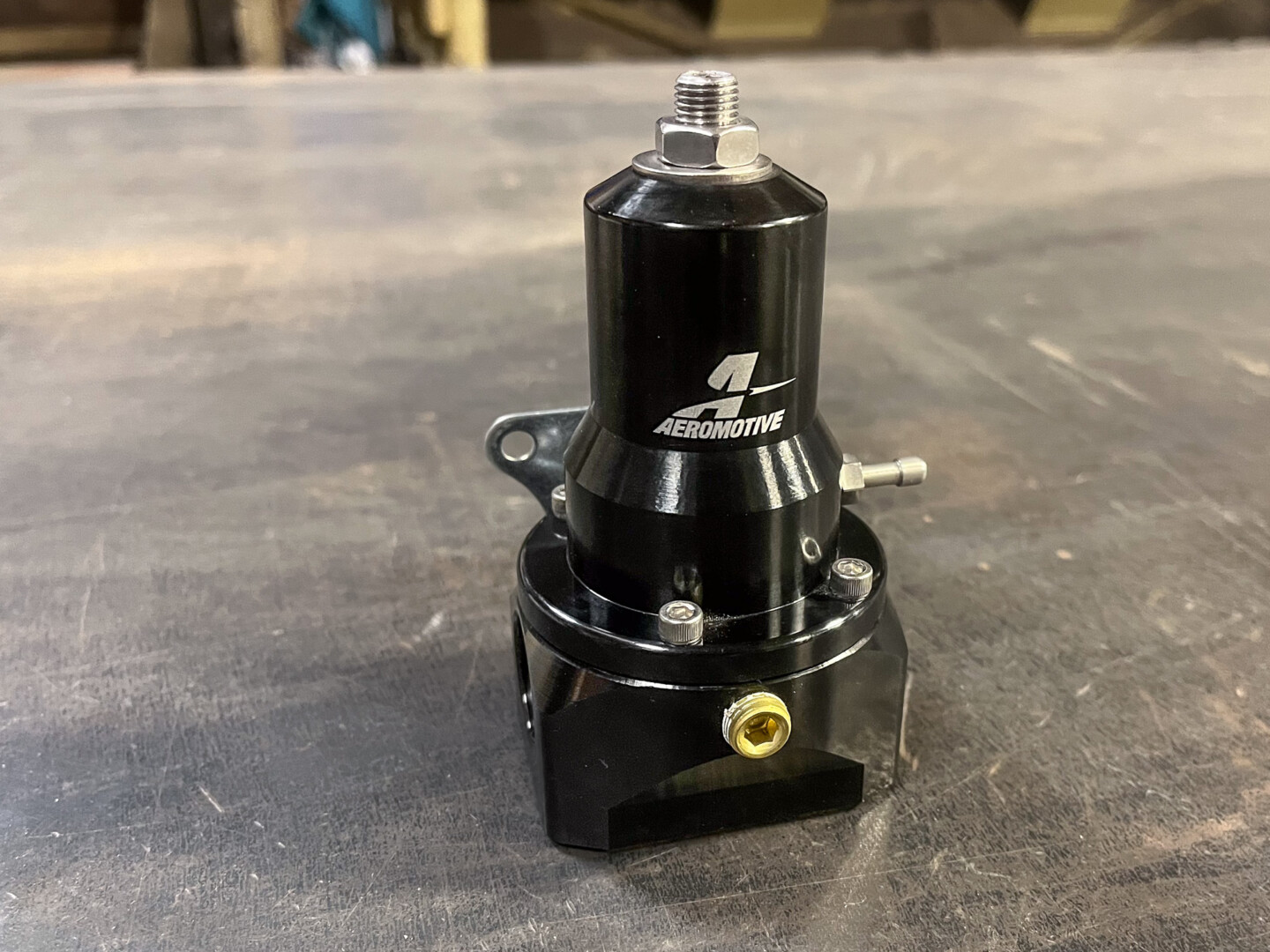E85 use is becoming more common with racers these days as class rules increasingly permit the fuel’s use. There are several benefits to using it over racing gasoline besides its octane number, which make it a popular choice in a variety of high-performance applications. We spoke with Brett Clow of Aeromotive Inc. to get more information on this topic and give you a brief idea of what you may need to consider when moving to an E85-based fuel system.
Racers are choosing E85, especially in turbocharged and supercharged engine combinations, which benefit greatly from the increased octane over pump gas and the cooling properties associated with using it. The decreased intake air temperatures provided by the vaporization of ethanol are beneficial to both horsepower production and engine longevity. That said, E85 requires more volume per horsepower than gasoline and is a bit more corrosive, and these factors require the user to consider specific fuel system products, implement various compatible engine components, and take care to perform the added maintenance related to a more corrosive fuel.
Our upcoming turbocharged, small-block Ford-powered Ultra Street project (which we’ll get to more in a minute) is set to utilize E85 fuel, and so this topic is very central to our planning as we assemble the car and then get it on the racetrack.

Once you have decided to run E85 in your engine, it’s important to buy the correct pump, as engines consume a greater volume of E85 compared to gasoline for the same horsepower. Aeromotive can calculate how much fuel you’ll be moving and match the correct pump to your needs.
E85 Benefits
“E85 fuel systems are a common source of questions,” says Clow. “Very few people understand why the engine is going to run cooler, or more specifically, why the air charge is cooler, with E85. Any fuel, to become usable for combustion, must change from liquid to vapor in the intake runner or combustion chamber before it will burn. Changing liquid to vapor consumes heat, which is taken from the air in the intake charge. The heat extracted from the air by the evaporating fuel is a phenomenon called ‘latent heat of vaporization.’ Ethanol has a much higher latent heat of vaporization than gasoline.
“The net effect of a colder intake air charge is an increase in charge-air density, which means more oxygen per cubic foot of intake air in the combustion chamber, which when matched with the additional fuel to maintain a proper…
Click Here to Read the Full Original Article at DragzineDragzine…


